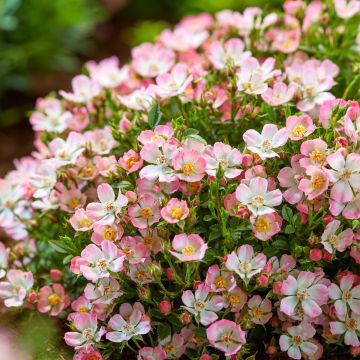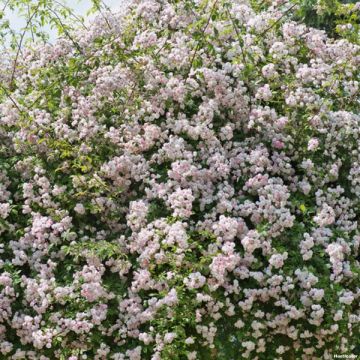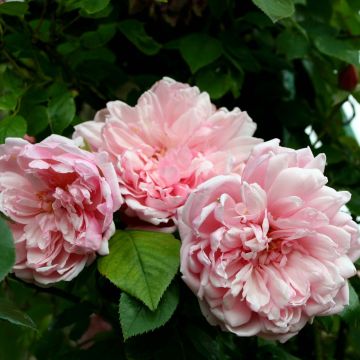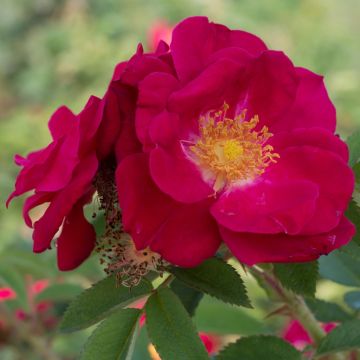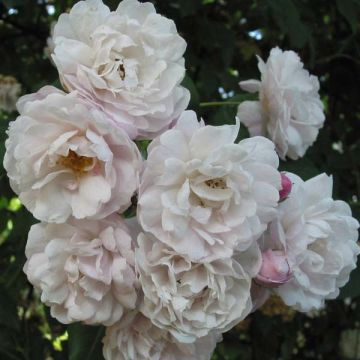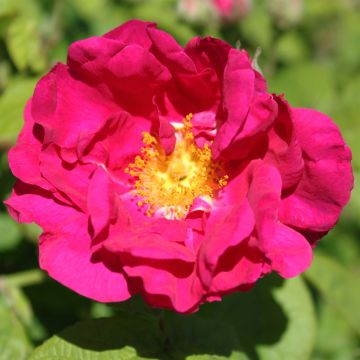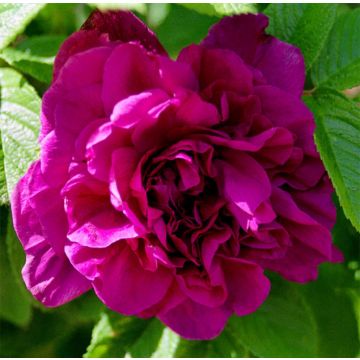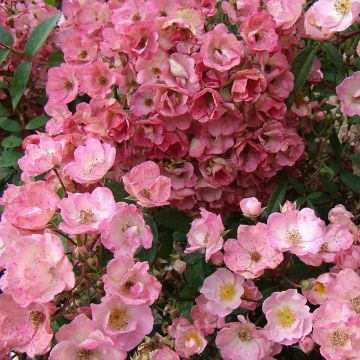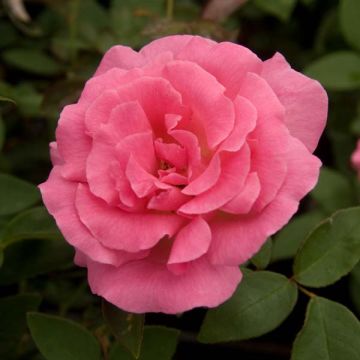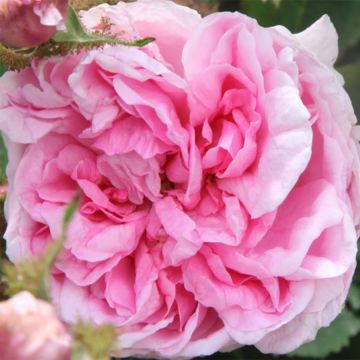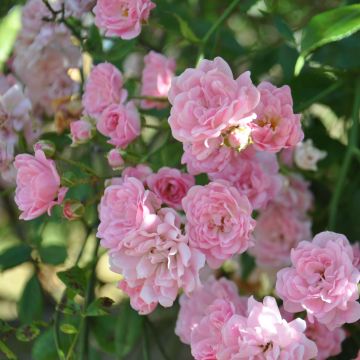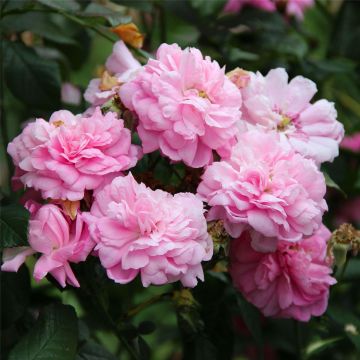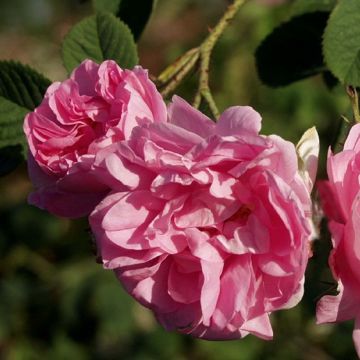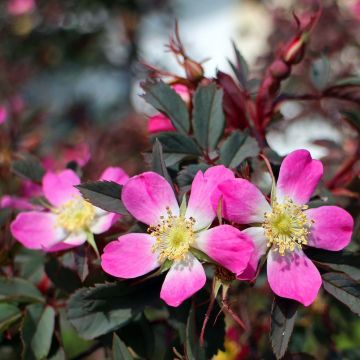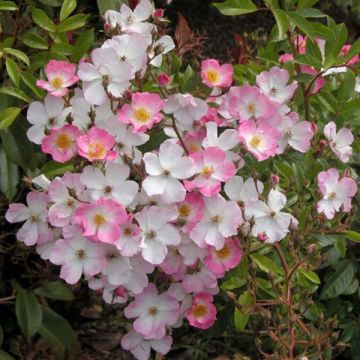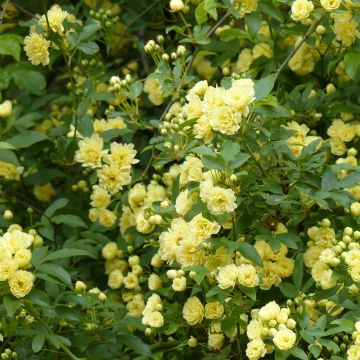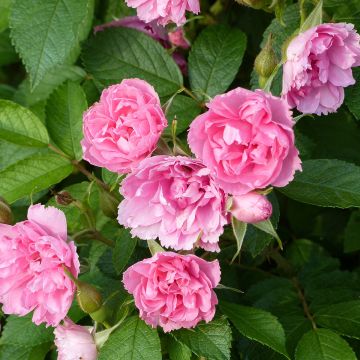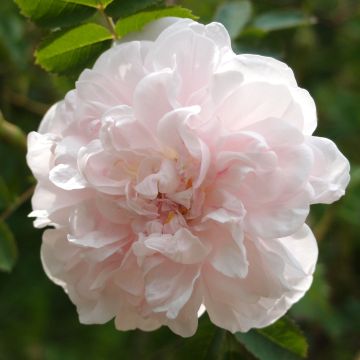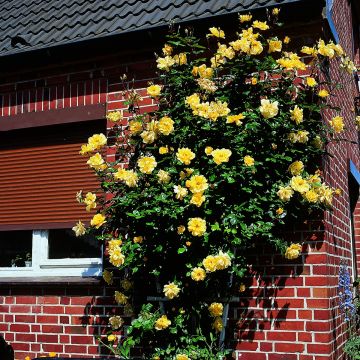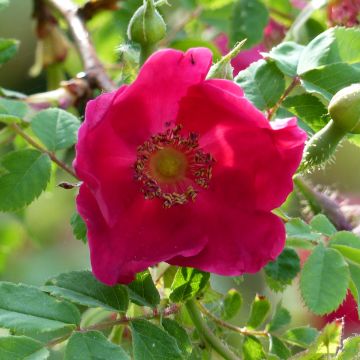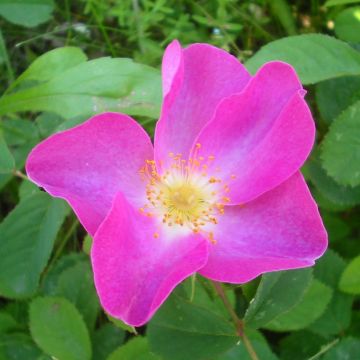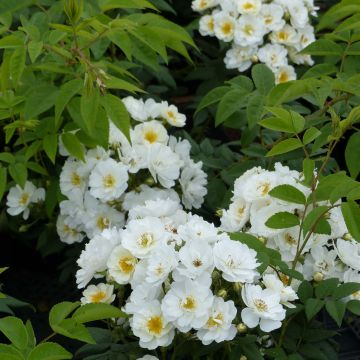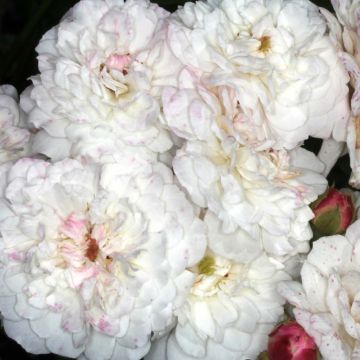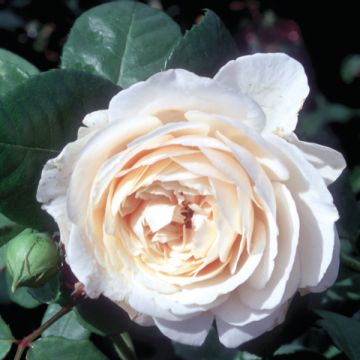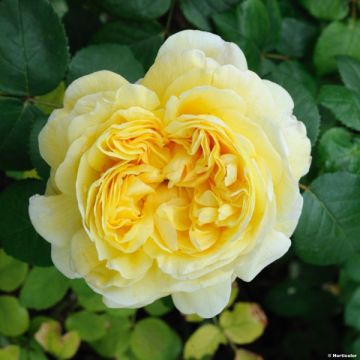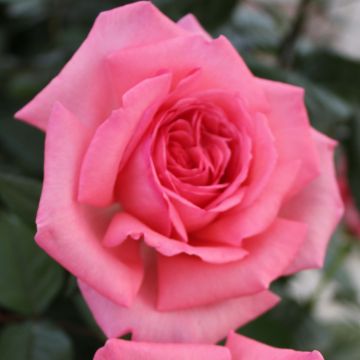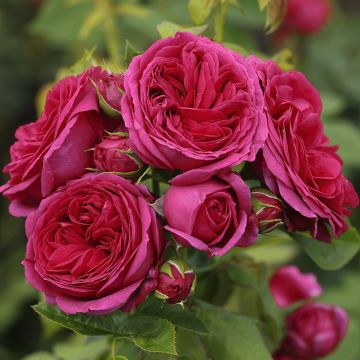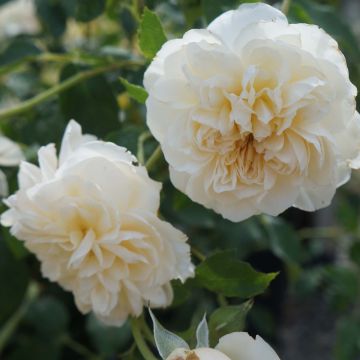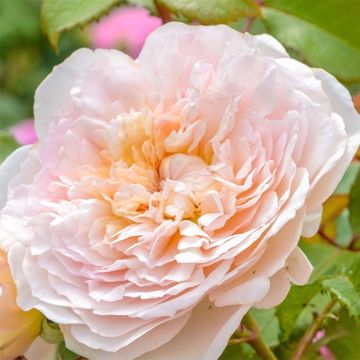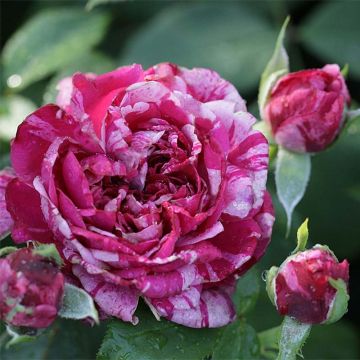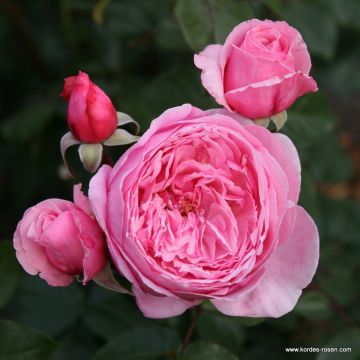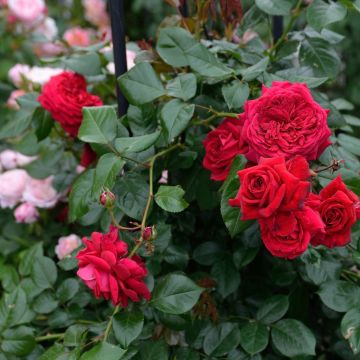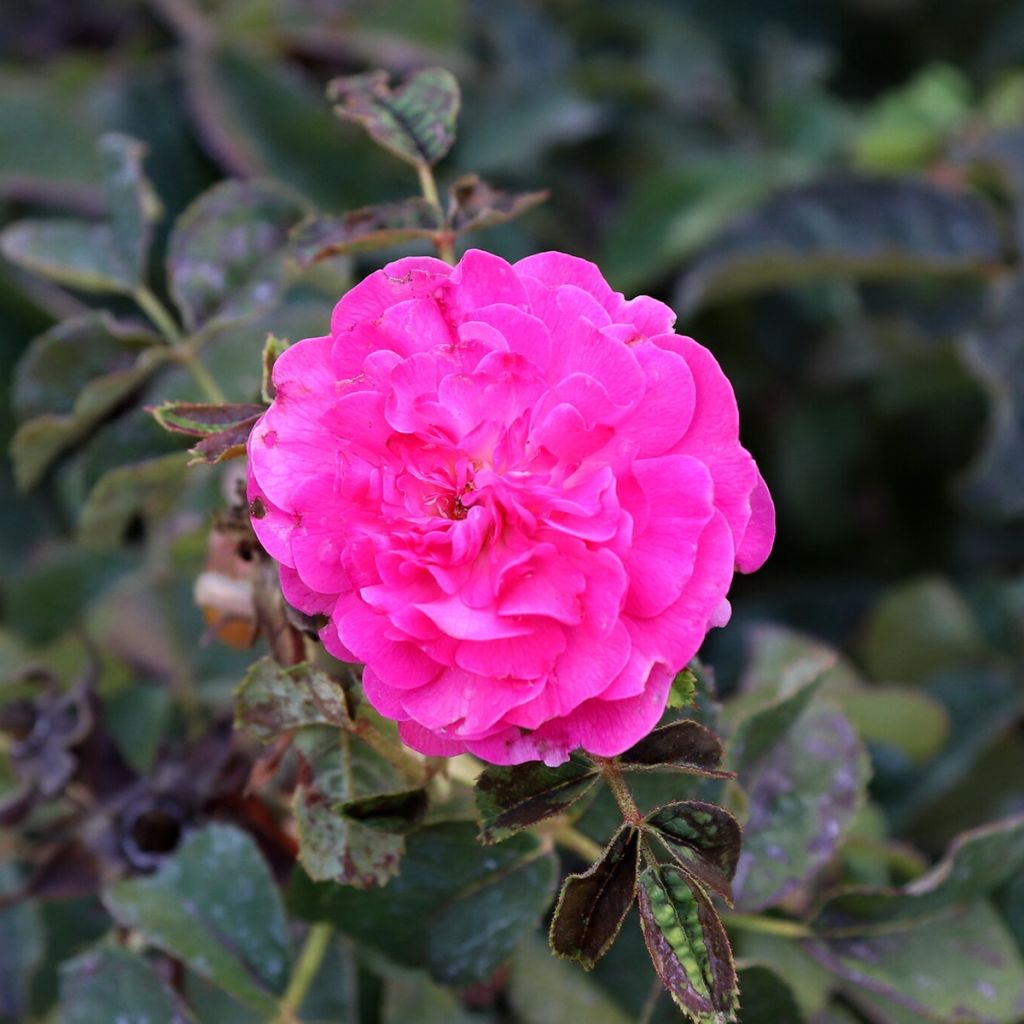

Rosier de Damas - Rosa (x) damascena
Rosa x damascena - damask rose
Rosa x damascena
Damask Rose, Rose of Castile
Why not try an alternative variety in stock?
View all →This plant carries a 24 months recovery warranty
More information
We guarantee the quality of our plants for a full growing cycle, and will replace at our expense any plant that fails to recover under normal climatic and planting conditions.
From €5.90 for pickup delivery and €6.90 for home delivery
Express home delivery from €8.90.
From €5.90 for pickup delivery and €6.90 for home delivery
Express home delivery from €8.90.
Delivery to Corse prohibited: UE law prohibits the import of this plant from mainland France to Corse as part of the fight against Xylella fastidiosa. Please accept our sincere apologies.
More information
Does this plant fit my garden?
Set up your Plantfit profile →
Description
The Damask rose, in Latin Rosa x damascena, is a very ancient bush rose, originating from many varieties, and still cultivated for perfumery because of the richness of its essential oil. It is upright but flexible, robust and healthy and adorned with pleasant, light greyish-green foliage. This rose has flowers in summer that exhale a powerful sweet scent in hot weather. Its semi-double flowers are usually light pink and bloom abundantly in summer. In the garden, this vigorous rose will integrate perfectly into an informal hedge.
This Damask rose a botanical species of unknown origin, perhaps brought from the Holy Land in 1254 by Robert de Brie during a crusade. Nowadays, this bush grows naturally in Syria, Morocco, Andalusia, and the Caucasus. Specialists believe that this hybrid has three main ancestors: the Gallic rose (Rosa gallica), Rosa phoenicia, or Rosa moschata, and Rosa fedtschenkoana. Among its descendants are the Bulgarian rose, 'Trigintipetala', Rosa x damascena 'Versicolor' (also known as 'York and Lancaster'), Ispahan (also known as Pompon des Princes), Madame Hardy and 'Celsinia'.
The Damask rose is a beautiful bush with fairly rapid growth and a rather upright habit reaching about 2m (7ft) high and 1.50m (5ft) in spread. Regular pruning will make it more bushy. Its branches bear strong thorns. The grey-green foliage is divided into leaflets and is remarkably healthy. This deciduous foliage falls in autumn. This rose blooms abundantly in June-July, with slightly loose clusters of medium-sized flowers reaching 6-7cm (2-3in) in diameter. Each one is composed of petals of translucent pink petals. At full bloom, the pen flower reveals a beautiful golden yellow stamen centre. The scent of Damask roses has been studied and reveals more than 400 constituents. It is strong and pleasant and persists in dried or faded flowers. The hips are almost oval and red. This vigorous variety needs space to reach its full potential.
Later passed over for perpetual hybrid varieties, botanical roses are still strong plants. It is shrubs like the Damask rose that have made the reputation of these plants. This rose is rarely available in commerce and will fit well in a rose lovers garden, a scented garden, and even in a flowering hedge. It contributes to summer-flowering shrub borders and flowering hedges, mixed with buddleias, white spiraeas, abelias, or lilacs. Its vigorous development needs careful planting, with a distance of 1 metre (3 feet) between each bush. If you have enough space, English, Old, or Shrub Roses are magnificent when planted in groups of three. They will grow together to form a single opulent bush that will bloom even more generously.
Report an error about the product description
Plant habit
Flowering
Foliage
Botanical data
Rosa
x damascena
Rosaceae
Damask Rose, Rose of Castile
Caucasus
Other Traditional Roses
Planting and care
Plant your Damask Rose in a sunny or lightly shaded position (in warm climates). Damask roses are fairly tolerant but do not like dry soils or limestone. They will thrive in any garden as long as the soil is deep, well-worked, not too heavy, and fertile. To plant your rose, dig the soil well and put a base fertiliser at the bottom of the planting hole, such as bonemeal. Water generously after planting to eliminate air pockets and regularly for a few weeks to aid rooting. This rose is hardy in most regions, except for mountainous areas or areas too cold in winter.
Pruning old roses mainly consists of deadheading, unless you want to keep the decorative hips.
Avoid pruning to maintain an interesting bushy shape.
However, in late winter (March), you can remove branches from the middle of the bush to keep it open.
Planting period
Intended location
Care
-
, onOrder confirmed
Reply from on Promesse de fleurs
Fragrant Roses
Haven't found what you were looking for?
Hardiness is the lowest winter temperature a plant can endure without suffering serious damage or even dying. However, hardiness is affected by location (a sheltered area, such as a patio), protection (winter cover) and soil type (hardiness is improved by well-drained soil).

Photo Sharing Terms & Conditions
In order to encourage gardeners to interact and share their experiences, Promesse de fleurs offers various media enabling content to be uploaded onto its Site - in particular via the ‘Photo sharing’ module.
The User agrees to refrain from:
- Posting any content that is illegal, prejudicial, insulting, racist, inciteful to hatred, revisionist, contrary to public decency, that infringes on privacy or on the privacy rights of third parties, in particular the publicity rights of persons and goods, intellectual property rights, or the right to privacy.
- Submitting content on behalf of a third party;
- Impersonate the identity of a third party and/or publish any personal information about a third party;
In general, the User undertakes to refrain from any unethical behaviour.
All Content (in particular text, comments, files, images, photos, videos, creative works, etc.), which may be subject to property or intellectual property rights, image or other private rights, shall remain the property of the User, subject to the limited rights granted by the terms of the licence granted by Promesse de fleurs as stated below. Users are at liberty to publish or not to publish such Content on the Site, notably via the ‘Photo Sharing’ facility, and accept that this Content shall be made public and freely accessible, notably on the Internet.
Users further acknowledge, undertake to have ,and guarantee that they hold all necessary rights and permissions to publish such material on the Site, in particular with regard to the legislation in force pertaining to any privacy, property, intellectual property, image, or contractual rights, or rights of any other nature. By publishing such Content on the Site, Users acknowledge accepting full liability as publishers of the Content within the meaning of the law, and grant Promesse de fleurs, free of charge, an inclusive, worldwide licence for the said Content for the entire duration of its publication, including all reproduction, representation, up/downloading, displaying, performing, transmission, and storage rights.
Users also grant permission for their name to be linked to the Content and accept that this link may not always be made available.
By engaging in posting material, Users consent to their Content becoming automatically accessible on the Internet, in particular on other sites and/or blogs and/or web pages of the Promesse de fleurs site, including in particular social pages and the Promesse de fleurs catalogue.
Users may secure the removal of entrusted content free of charge by issuing a simple request via our contact form.
The flowering period indicated on our website applies to countries and regions located in USDA zone 8 (France, the United Kingdom, Ireland, the Netherlands, etc.)
It will vary according to where you live:
- In zones 9 to 10 (Italy, Spain, Greece, etc.), flowering will occur about 2 to 4 weeks earlier.
- In zones 6 to 7 (Germany, Poland, Slovenia, and lower mountainous regions), flowering will be delayed by 2 to 3 weeks.
- In zone 5 (Central Europe, Scandinavia), blooming will be delayed by 3 to 5 weeks.
In temperate climates, pruning of spring-flowering shrubs (forsythia, spireas, etc.) should be done just after flowering.
Pruning of summer-flowering shrubs (Indian Lilac, Perovskia, etc.) can be done in winter or spring.
In cold regions as well as with frost-sensitive plants, avoid pruning too early when severe frosts may still occur.
The planting period indicated on our website applies to countries and regions located in USDA zone 8 (France, United Kingdom, Ireland, Netherlands).
It will vary according to where you live:
- In Mediterranean zones (Marseille, Madrid, Milan, etc.), autumn and winter are the best planting periods.
- In continental zones (Strasbourg, Munich, Vienna, etc.), delay planting by 2 to 3 weeks in spring and bring it forward by 2 to 4 weeks in autumn.
- In mountainous regions (the Alps, Pyrenees, Carpathians, etc.), it is best to plant in late spring (May-June) or late summer (August-September).
The harvesting period indicated on our website applies to countries and regions in USDA zone 8 (France, England, Ireland, the Netherlands).
In colder areas (Scandinavia, Poland, Austria...) fruit and vegetable harvests are likely to be delayed by 3-4 weeks.
In warmer areas (Italy, Spain, Greece, etc.), harvesting will probably take place earlier, depending on weather conditions.
The sowing periods indicated on our website apply to countries and regions within USDA Zone 8 (France, UK, Ireland, Netherlands).
In colder areas (Scandinavia, Poland, Austria...), delay any outdoor sowing by 3-4 weeks, or sow under glass.
In warmer climes (Italy, Spain, Greece, etc.), bring outdoor sowing forward by a few weeks.

































